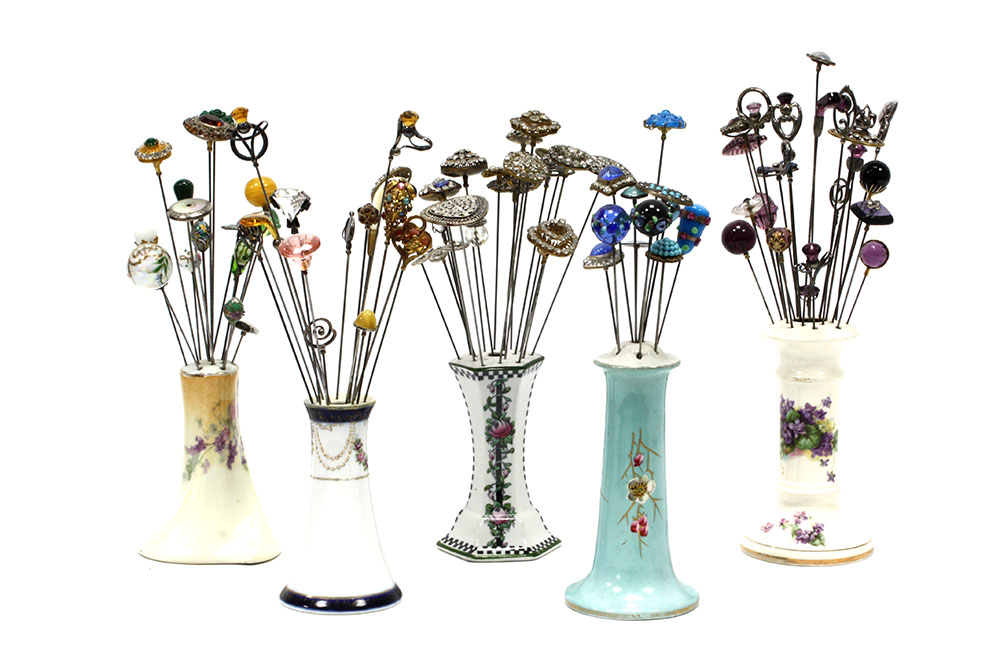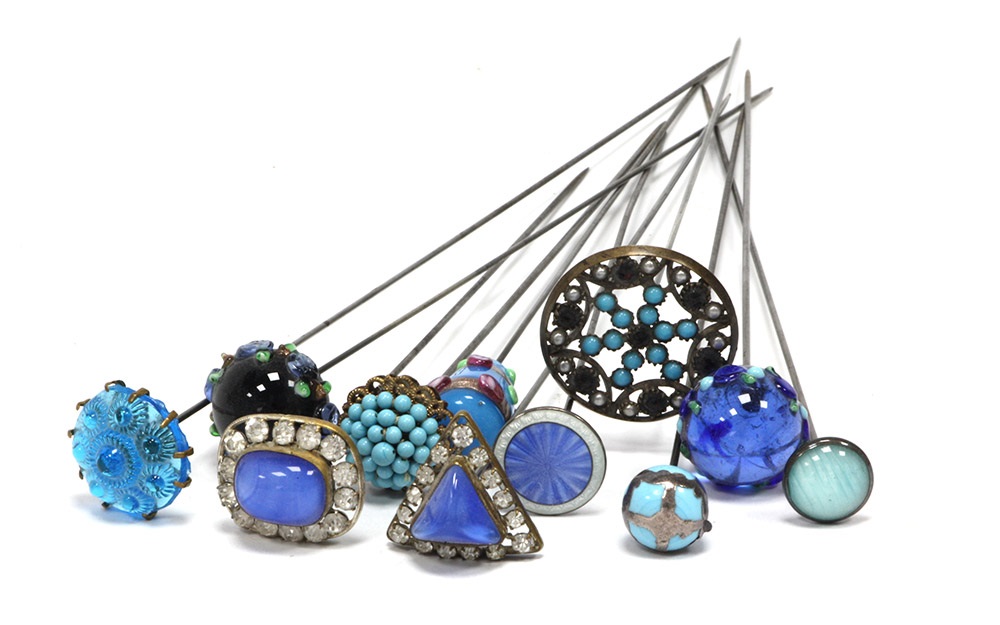Hatpins
One of the great things about working at the Auction Gallery is that every day is different!
14/11/2024 Blog
One of the great things about working at the Auction Gallery is that every day is different and I never know what I am going to discover whether it be a picture by a local artist, an unusual piece of ceramic or a selection of jewellery.
Earlier this week a lady brought in a beautiful collection of hatpins there’s around sixty altogether ranging from lovely Victorian silver examples to colourful glass and paste set statement pieces. These are going to be sold in our next Fine Silver, Jewellery and Watch sale to be held on 12th December and I am sure will create a lot of interest amongst collectors.

Hatpins have been used since the early 1400’s but enjoyed renewed popularity starting in the 1890’s. Fashion at that time demanded ladies wore their hair in ornate up do’s and large extravagant hats. These were pinned to their owners hair using hatpins. Ladies at this time enjoyed a level of freedom rarely seen before in society and began working away from home and went about in public spaces unchaperoned for the first time. With this new found freedom came an increase in harassment from unsavoury men. The hat pin became a woman’s weapon of choice and could be easily concealed and one good jab was all it took to deter unwanted attention.

Hatpins came in array of different lengths up to as long as 13 inches as well as many colours and designs and were often used as a status symbol. It was thought the more ornate the hatpin the wealthier the owner was. They were made in a variety of materials from gold and silver to brass, wood and even ivory. Pin tops commonly had faux Jewels inset and others had adjustable tops or secret compartments.
By 1910 numerous countries including the UK and America declared hatpins a threat to society and hat pins over 9 inches in length were banned. This was met with considerable resistance especially from the suffragettes and working class women. They decried the measures citing a worry for women’s safety if they were unable to defend themselves. During WW1 hatpins became viewed as an extravagance and the materials used to make hat pins were redirected for the war effort. By the end of the war fashion had changed again and shorter hair and smaller hats were more popular thus rendering the hatpin obsolete.

One of my favourite designers of hatpins is Charles Horner a Halifax based silversmith. He is known for silver and enamelled pendants, brooches and hatpins. His designs are usually inspired by the Art Nouveau style and also the Egyptian revival that was popular at the time. There are a few of his hatpins amongst our collection so do come down and take a look at them on the viewing day.